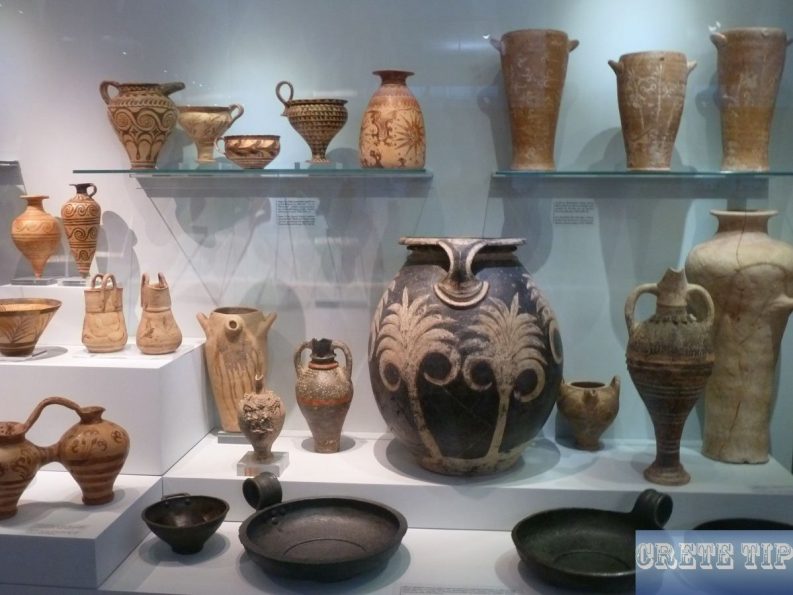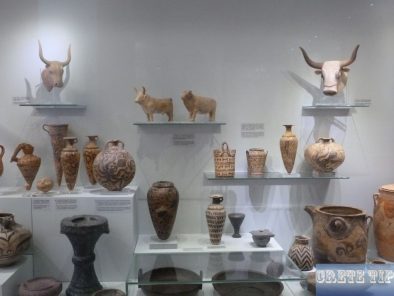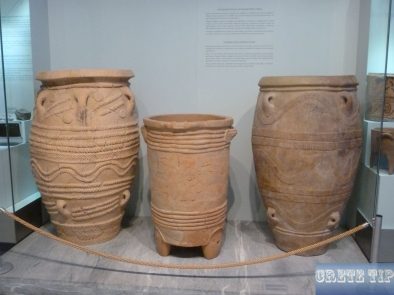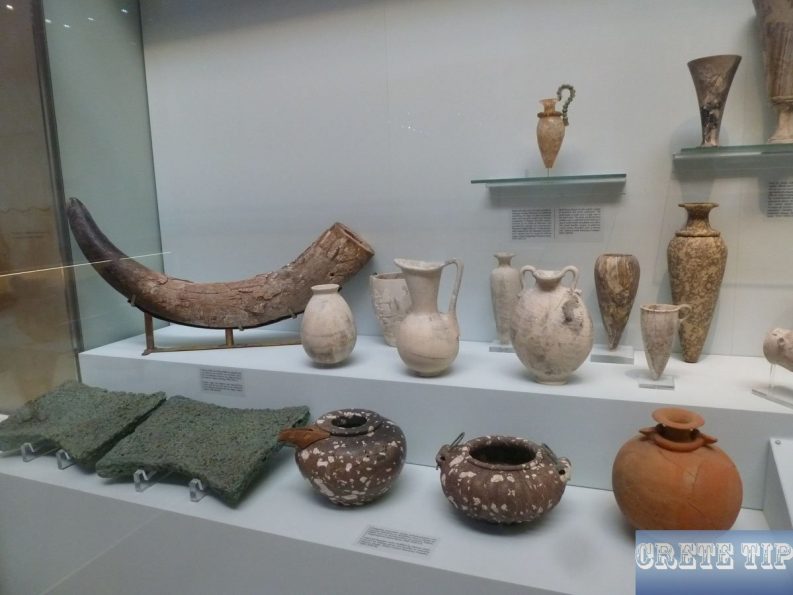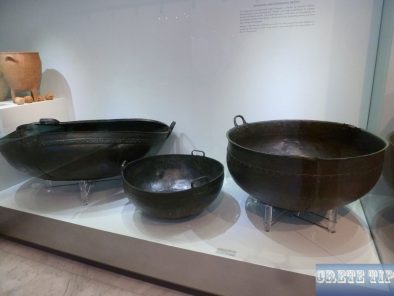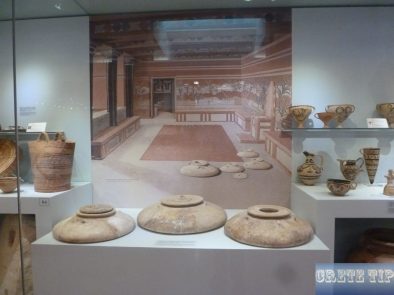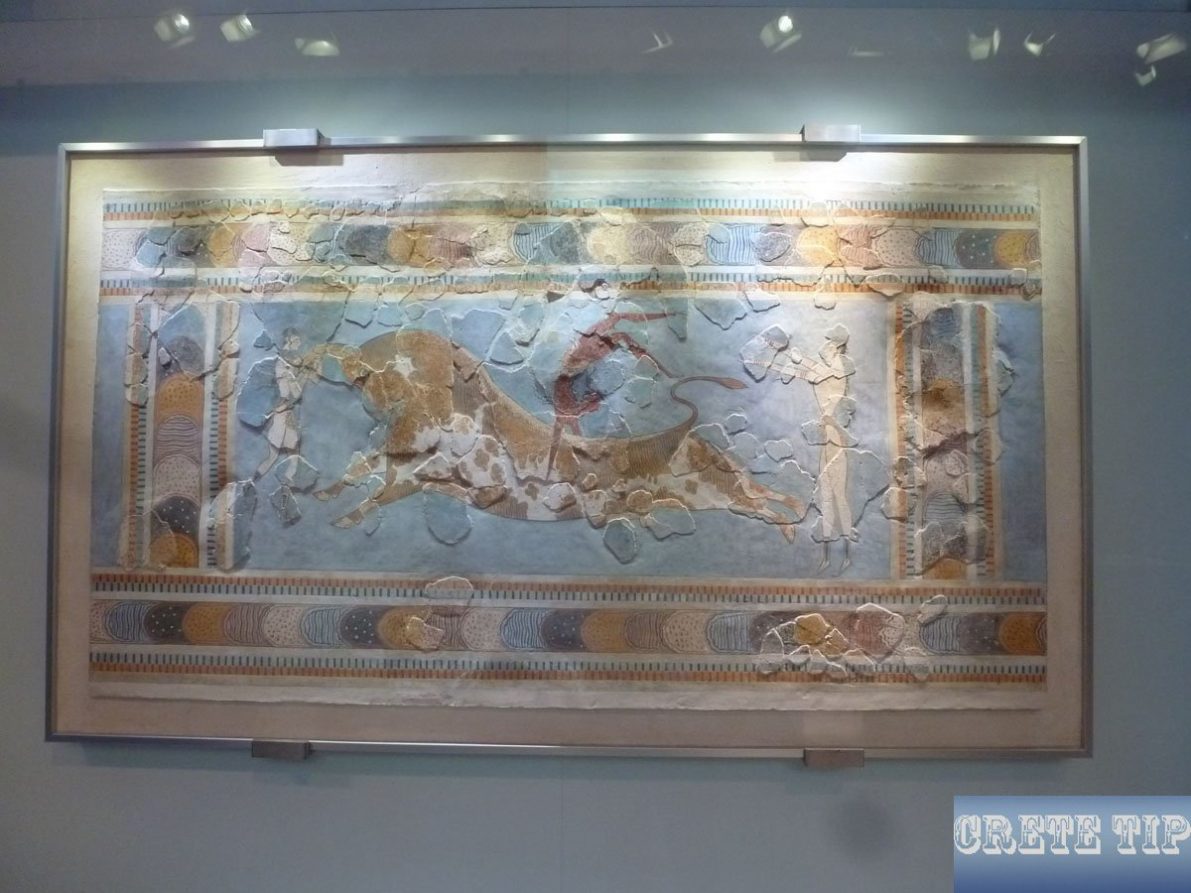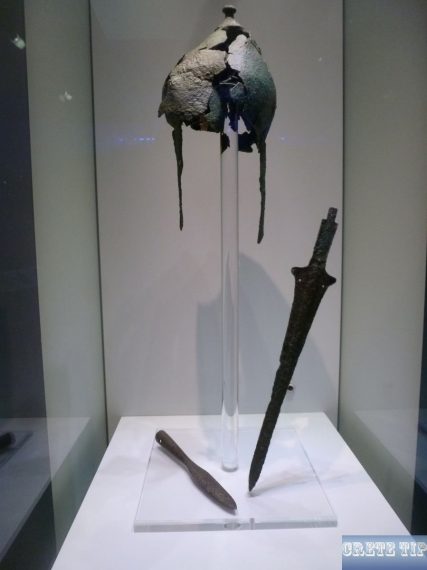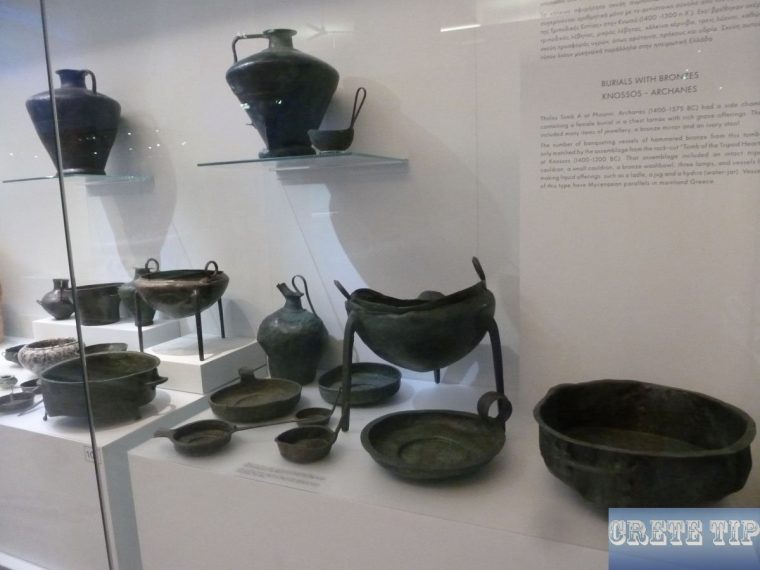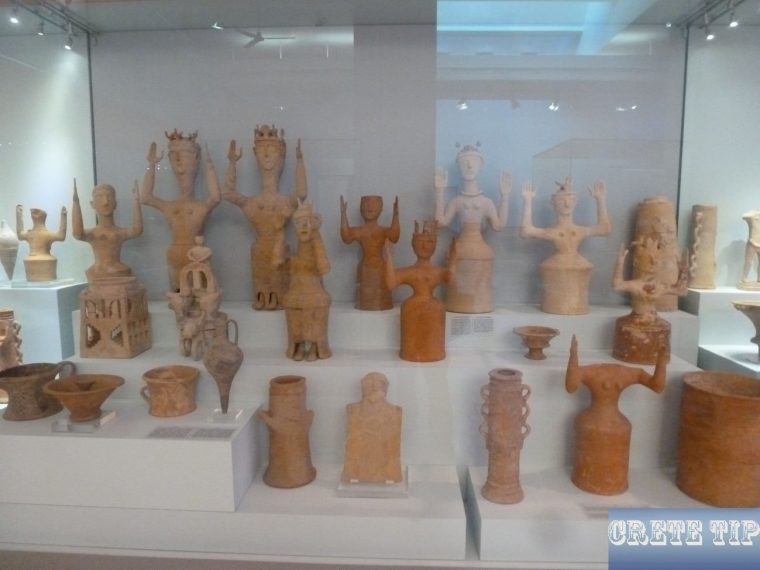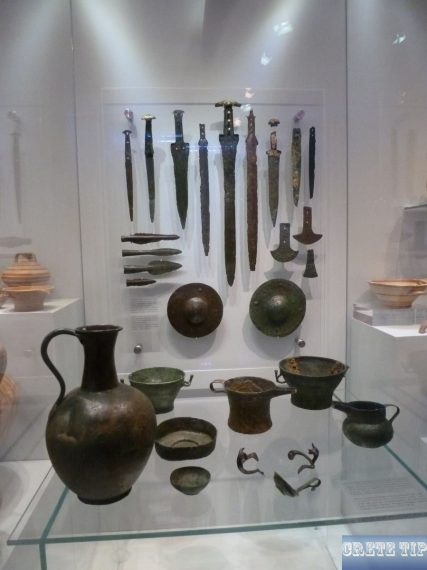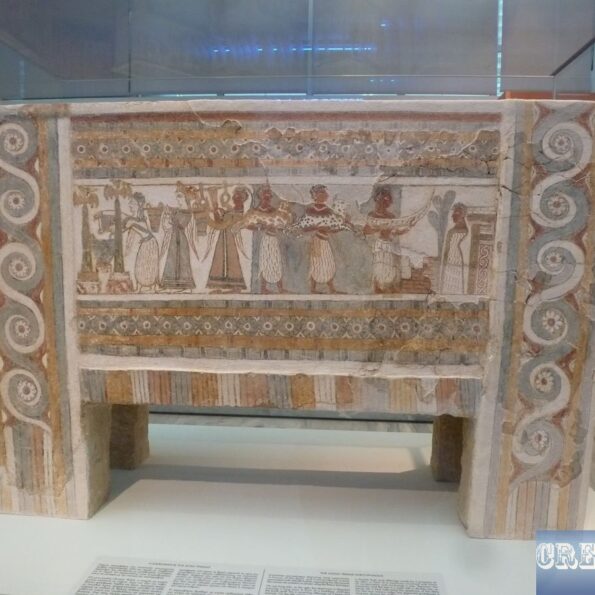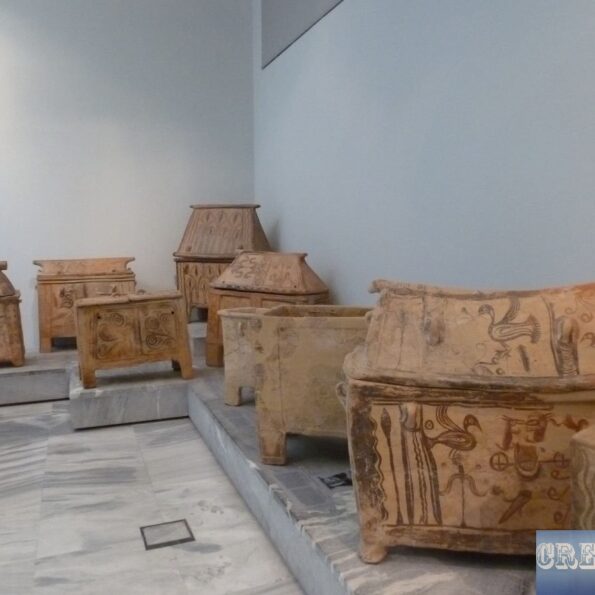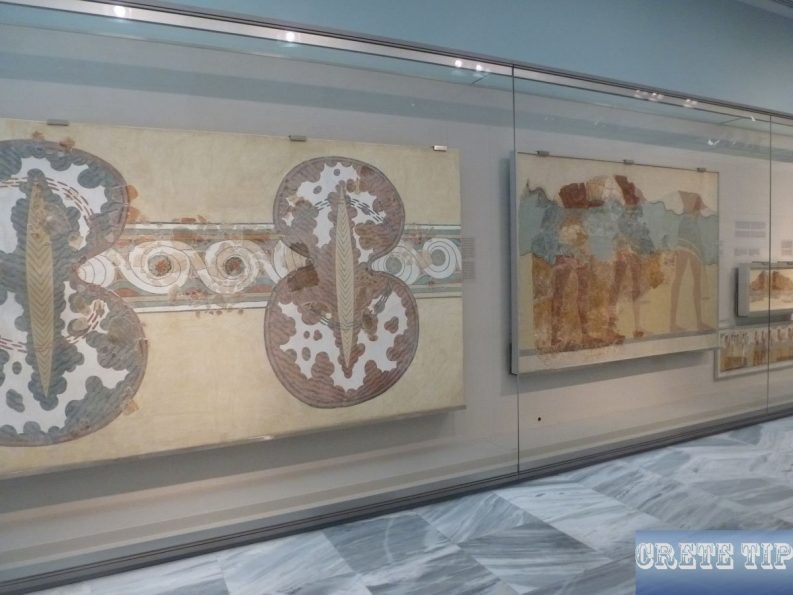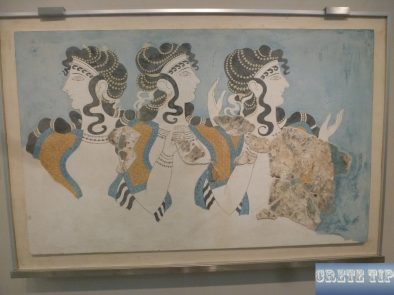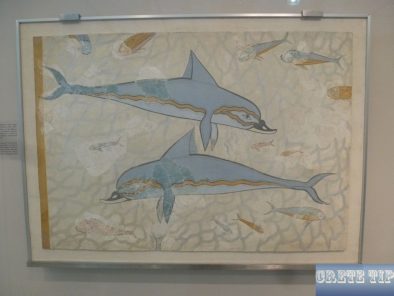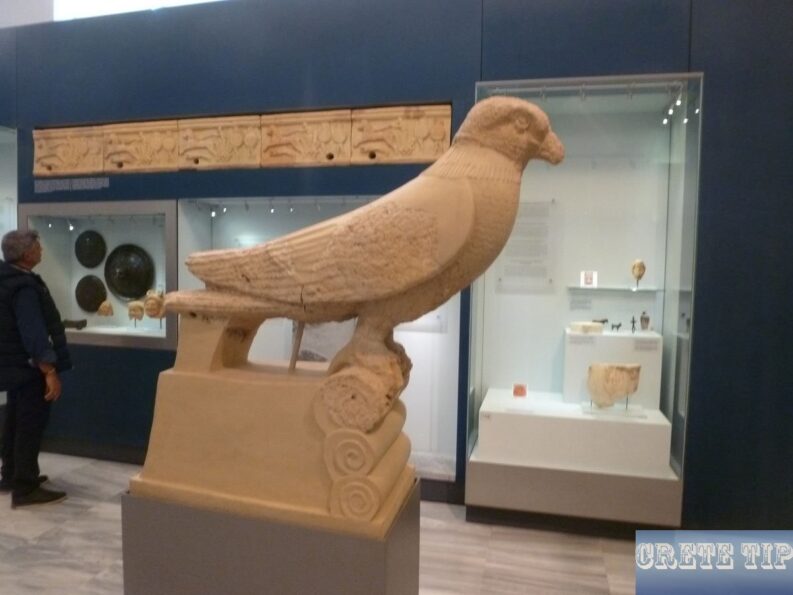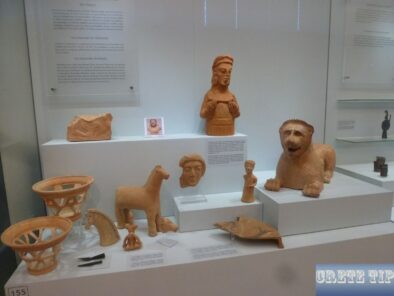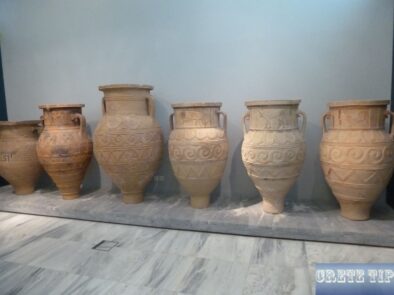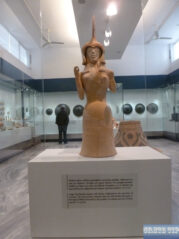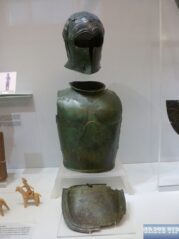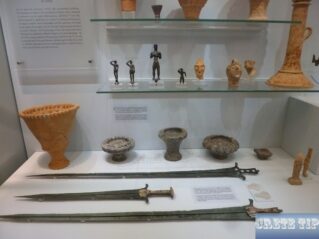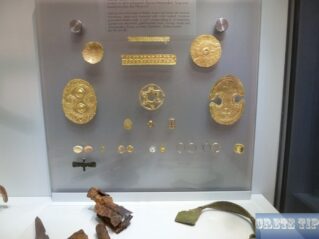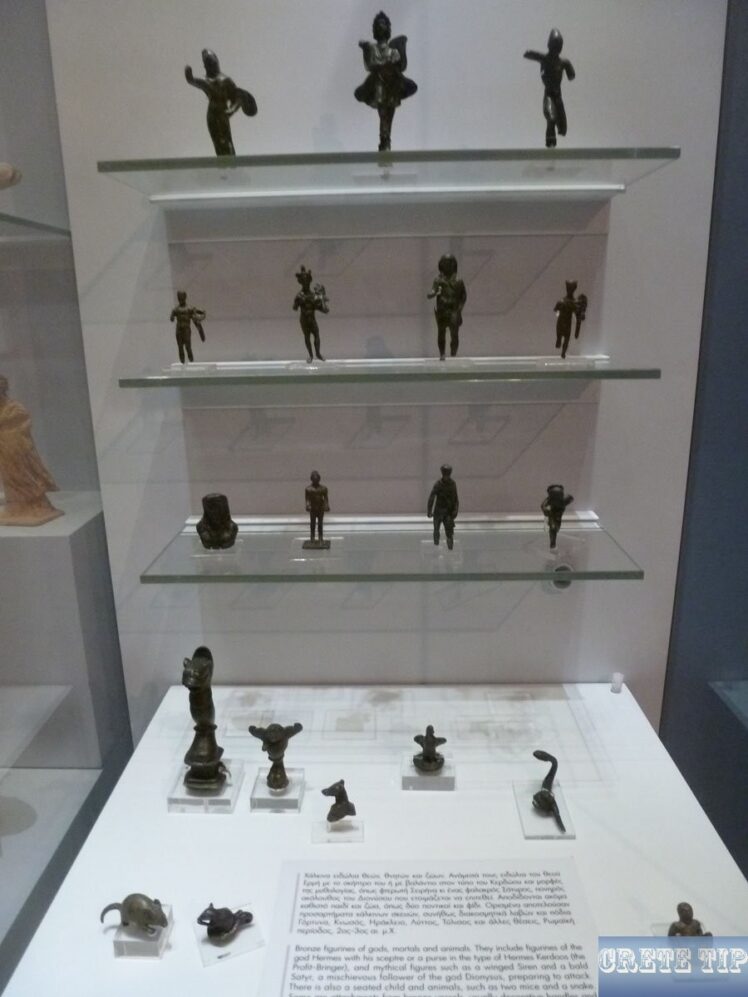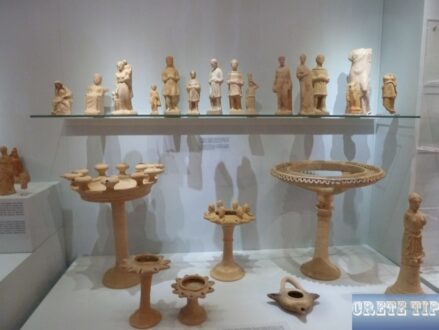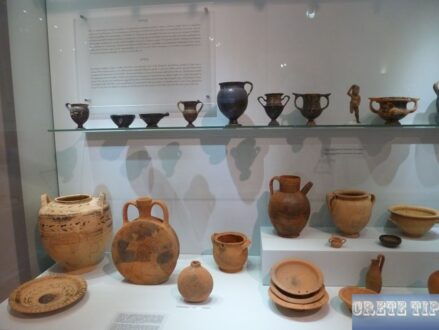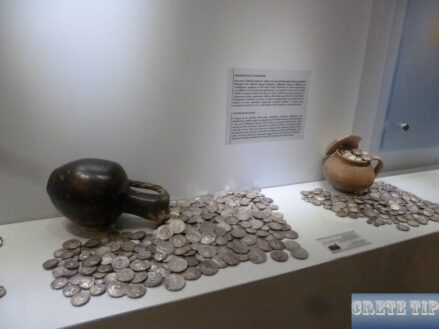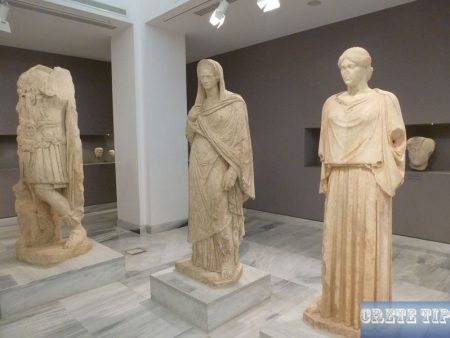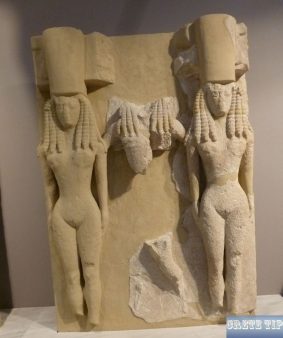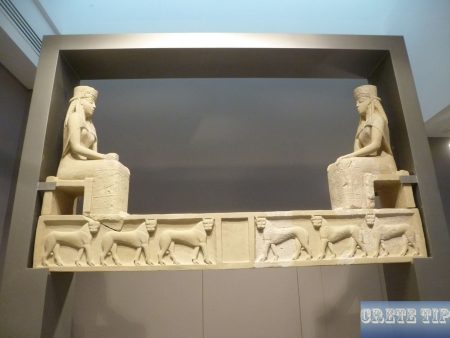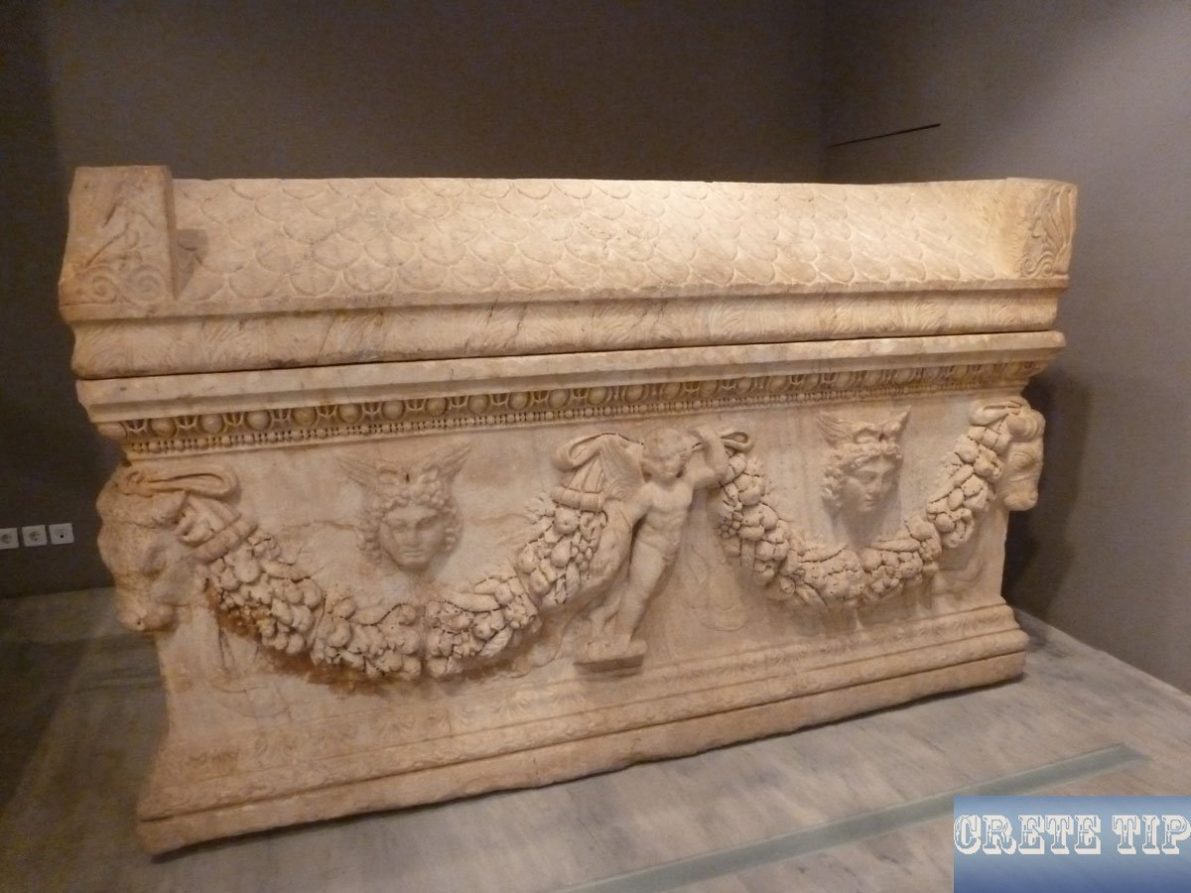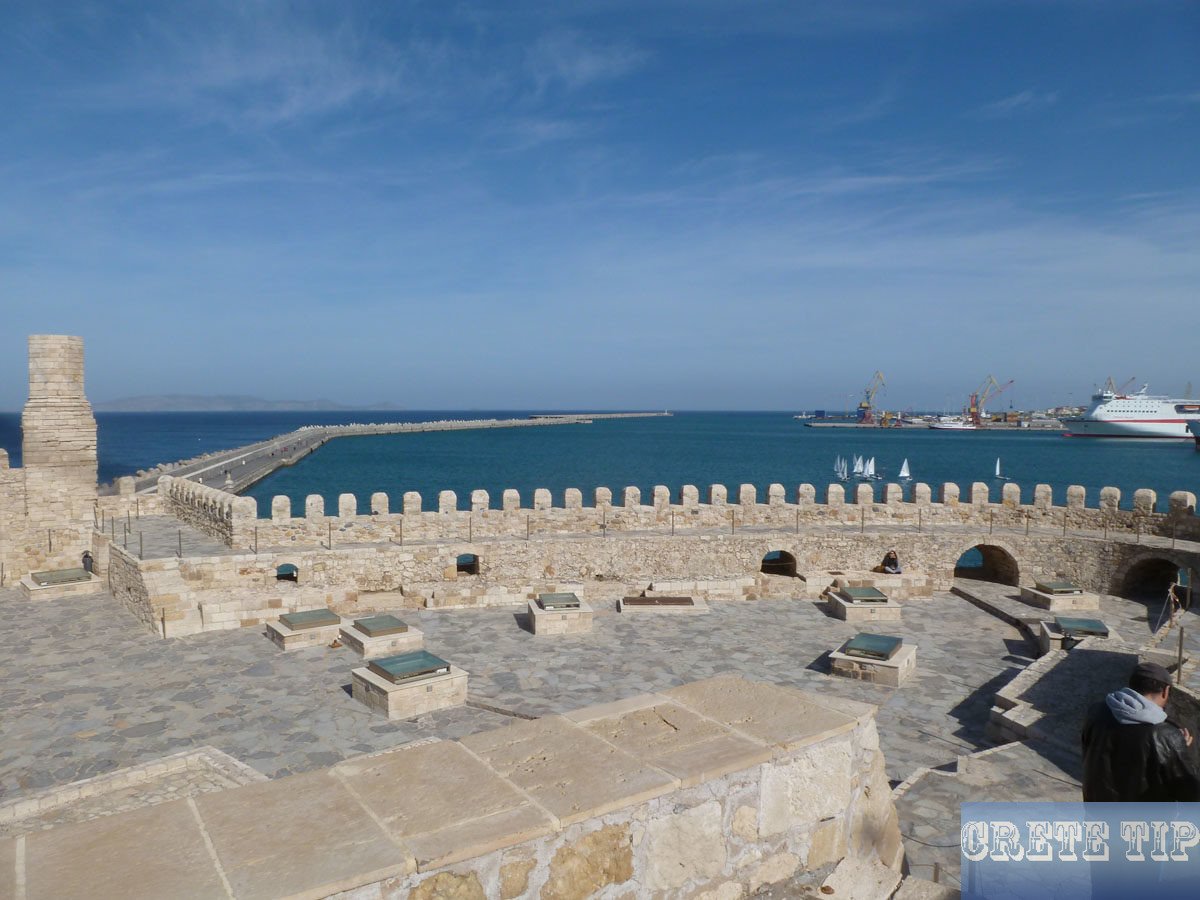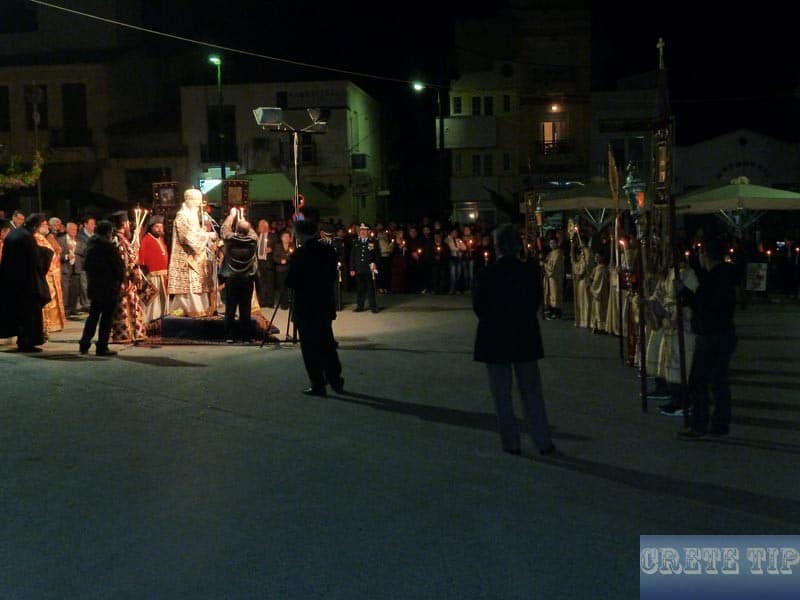The Archaeological Museum of Heraklion is the second largest museum in Greece and one of the most important in the world, as it is the only one in which the Minoan culture and art is completely dealt with.
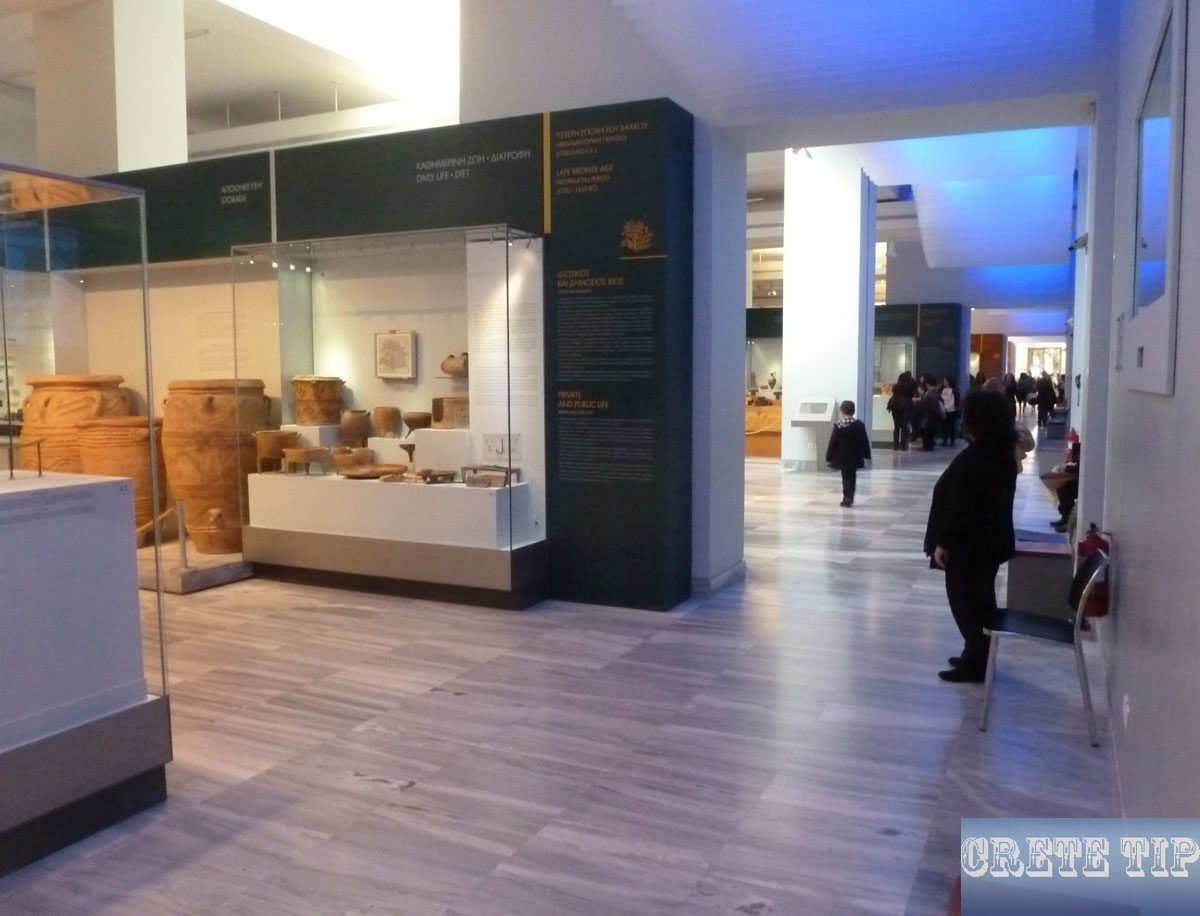
The Archeological Museum is located at a central point of the city of Heraklion near the port, in a complex of buildings built in the 1930s on the site of the Venetian Church of St Francis.
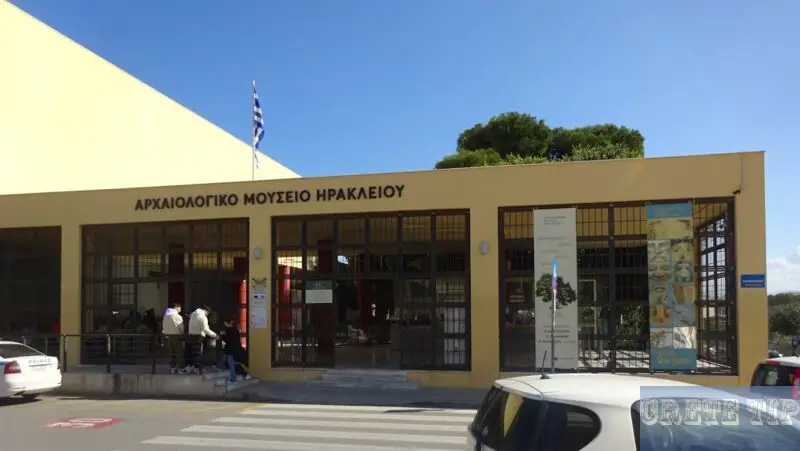
Archeological Museum of Heralion
Table of Contents
The majority of the finds on display in the Archelogical Museum come from Central and Eastern Crete, covering the entire centuries of development of Cretan civilization from the Neolithic to Roman times.
Most of the exhibitions in the Museum of Heraklion, which are displayed in chronological order and then by sites in now up to 27 galleries, show pieces of Minoan civilization, but there are also significant finds from other historical eras.
It is recommended that you follow the exhibition rooms in their numbered order. Smaller breaks can be made at outstanding and unique masterpieces. You should bring enough time with you, because it takes at least two hours to get an overview of all the exhibits. During the tourist season it is advisable to visit the museum at noon, as it is a bit quieter then.
The best place to park the car is in the guarded, paid car park at the port, on the right of the roundabout in front of the old Venetian ship yards and between the Koules fortress and main bus station. From here it is a 15-minute walk.
Basement
Gallery I to III
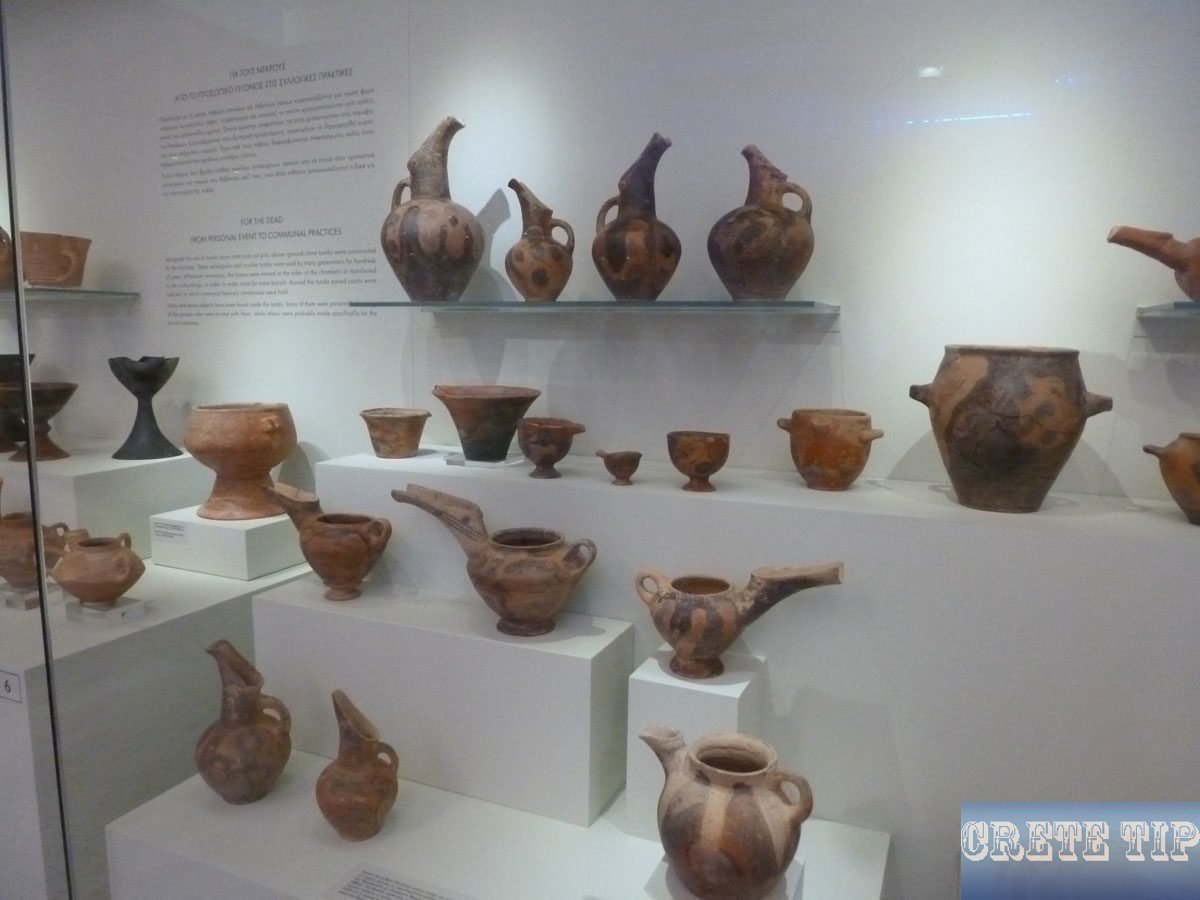
Neolithic (7,000 to 3,000 BC) and Prepalatial period (3,000 to 1,900 BC).
The first display cases contain Neolithic finds from Knossos, Katsambas and Fourni on the Gulf of Mirabello from 6,700 to 2,700 BC. A small marble figure from Knossos is outstanding.
The development of pottery in the period from 2,800 to 1,900 BC is then illustrated with examples from the regions of Pyrgos, Ayios Onoufrios, Levina, Vasiliki and Barbotine. These have a spotted surface due to an uneven firing.
Other showcases include marble and ivory figures. One has bronze weapons, daggers, tools and jewelry from the graves of Fourni. There are also display cases with gold jewelry from the tombs of Mochlos and Mesara, Arhanes and with miniatures and seals.
Early Palatial period (2,400 to 1,800 BC).
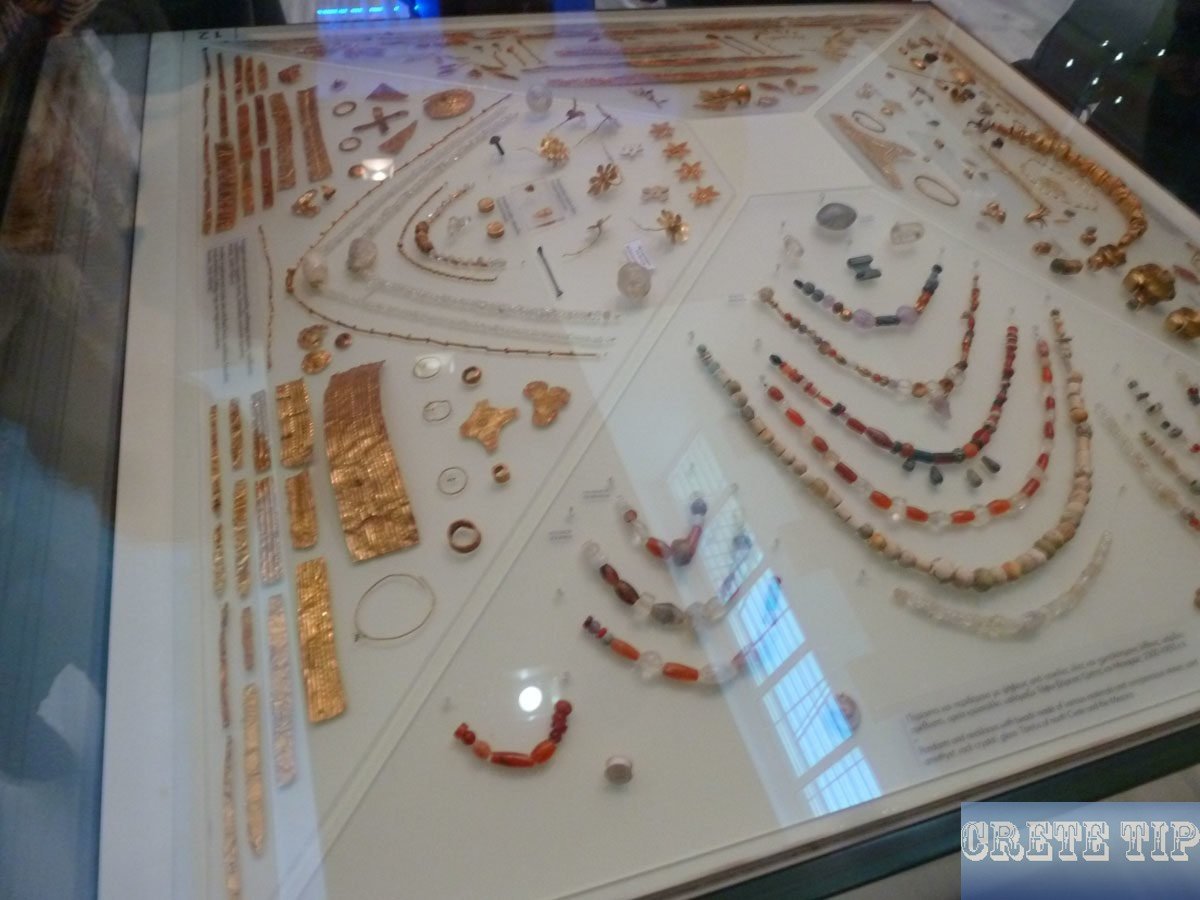
These finds come from the workshops of the first palaces of Knossos, Phaistos, Malia and the mountain sanctuaries of central and eastern Crete (1,900-1,700 BC).
There are display cases with vases in the Kamares style, some of them with the extremely thin-walled ‘eggshell’ ware from the Kamares cave. Stoneware panels of the city mosaic are displayed in a showcase, representing two or three-storey facades of Minoan houses.
In other showcases there is a clay vase for libation in the form of a female deity, figures of workers from the mountain shrines, models of ships, fish and bell-shaped figures.
In another display case there are seals, several of which are equipped with hieroglyphics.
Old Palace of Festos (1,900 to 1,700 BC).
Here you can find Kamares-style vases and other finds. In one showcase there is a vase with a cylindrical stem and a dolphin in relief and in another one there is a fruit bowl with a pointed rim and a krater support with flowers in relief. Other display cases contain ritual utensils and seals.
The best known is, however, the Festos discus with hieroglyphic writing on both sides, which has not yet been interpreted.
Gallery IV to VII
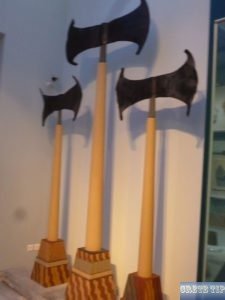
Besides vases in sea and flower style, there is also a masterpiece of stone sculpture, the rhyton in the shape of a bull’s head, which served as a vessel for libations and was made of black soapstone.
There is also the alabaster head of a lioness and one of the most brilliant examples of miniature sculptures, the snake goddesses, made of faience. In addition, the small, fully plastic bull jumper made of ivory and two faience plates with a relief depicting a cow or a wild goat suckling its young, and many other objects.
There are also bronze vases and the royal sword from Malia with a golden handle on which there is an acrobat.
Final phase of the palace of Knossos and Agia Triada (1,450 to 1,400 BC).
There are vases in palace style and a brilliant example of stone work, with bread-shaped alabaster in relief.
Other showcases include three-handed amphorae and a small glass, as well as large porpohyric lamps and toiletries with ivory ornaments. There are also silver cups and bronze figures of worshipers as well as the clay model of a house in Archanes.
The poems and clay tablets with writings in Linear A and the resulting Linear B in another display case deserve special attention. The British Michael Ventris and John Chadwick recognized and deciphered these as early Greek in 1953.
Findings from the cemeteries in Knossos, Festos and Archanes (1,450 to 1,300 BC).
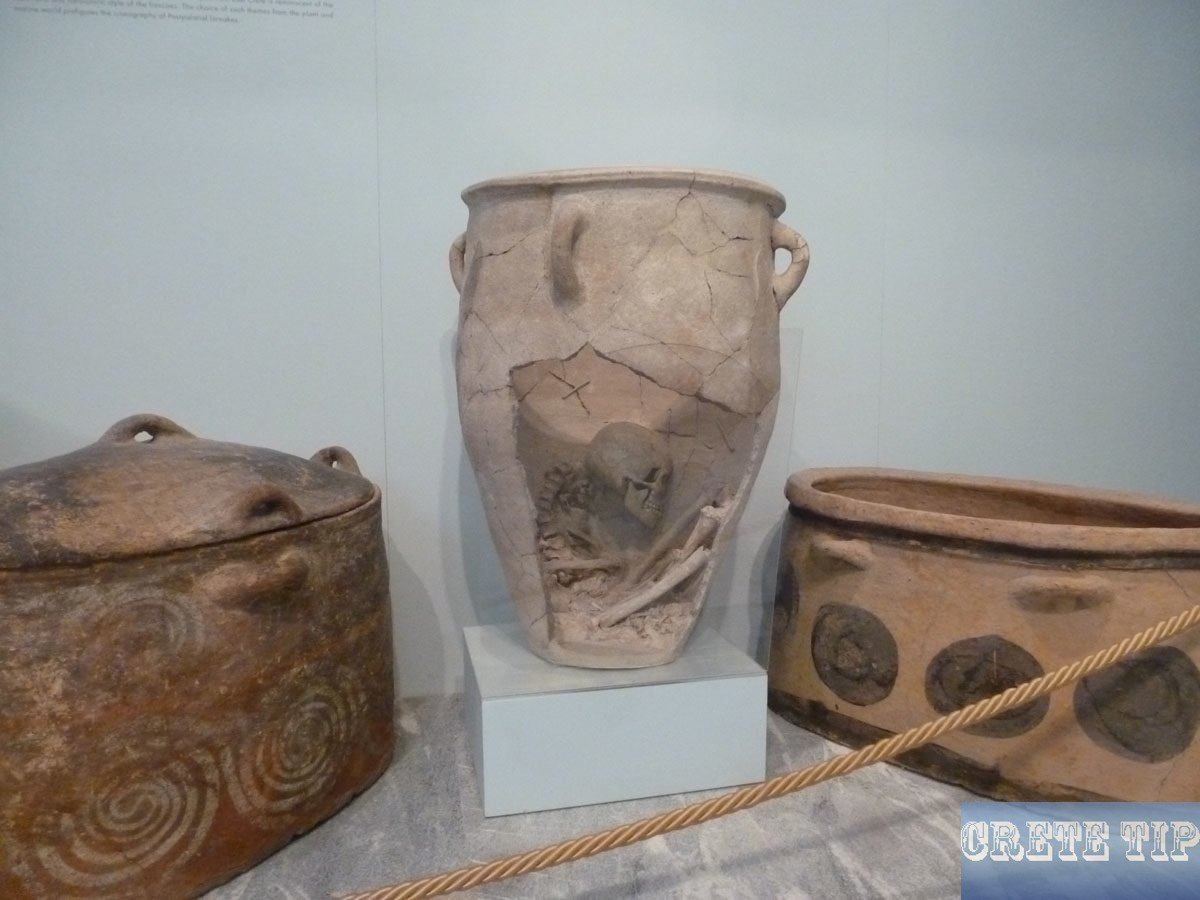
Many of the display cases contain various shaped vases in palace style. Those that stand out are provided with three handle amphorae, decorated with floral reliefs, as well as a libation ewer from Katsambas and an alabaster with schematized birds, fish and a circle dance in further showcases.
In addition, the figure of Kourotrofos and a cylindrical pyxis with a relief representation of the hunt on the holy bull in other showcases. There is a unique ivory model of a ship and also examples of miniature works with ivory necklaces and body care products.
Further, showcases contain bronze vases, silver and gold cups from the tombs of Knossos and Archanes. Then follow display cases with swords, daggers, knives and spears, with the highlight of the swords with gilded handles and the ‘Mycenaean boar’s helmet’ made of bronze, found in Knossos.
Gold jewelry and the famous Isopata ring, which shows a holy dance, can be seen. In the last display case there are rings, golden necklaces and the famous ring of Archanes, which represents the lament for the death of the vegetation god (tree god).
Finds from Megara, villas and caves in Central Crete (1,700 to 1,450 BC).
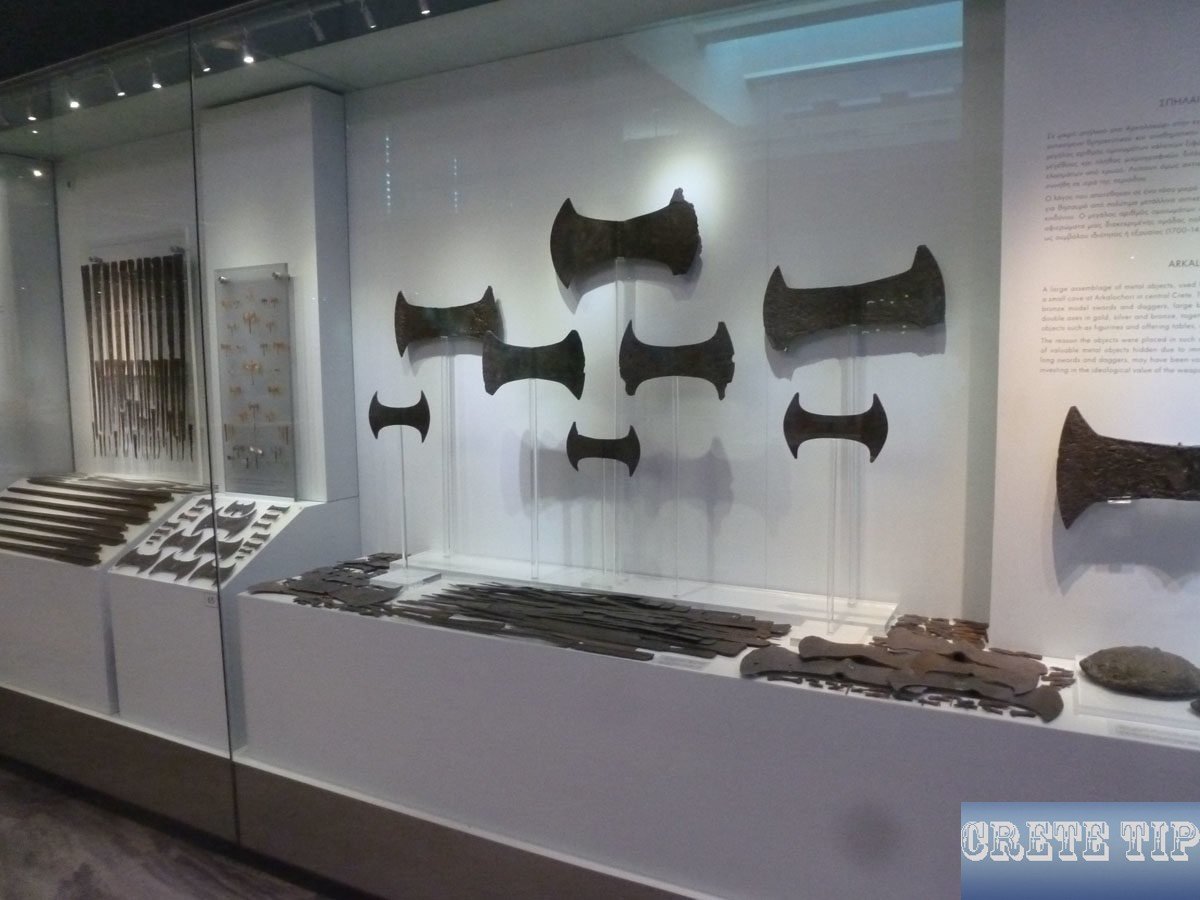
There are ceramics in the new palace style and a variety of finds in the showcases. Masterpieces from this period are the soapstone relief vases from Agia Triada.
In one display case there is the so-called ‘reaper vase’, which shows harvesters led by musicians and in another one a Rhyton with representations of competitions, like boxes, rings and bull jumping. There is also the so-called ‘Prince Cup’.
Then showcases with stone works, including the rhymes, the ‘communion cups’, the Kernoi and the outstanding bronze figures of people and animals.
Bronze tools and axes for ritual use are also on display. Finally, there are miniature gold pieces, including the famous pendant of the fabulous ‘Bee of Malia’ with a composition of two bees introducing a drop of honey into the hive. Bronze talents of the commercial currency of this epoch are also on display.
Gallery VIII
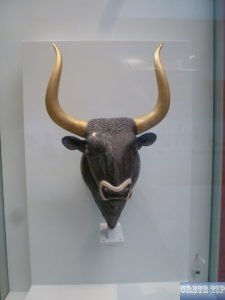
Palace of Zakros (1.700 to 1.450 B.C.).
In the showcases are ceramics in the marine and floral style. The rhyton in a display case is unique because it is made of rock crystal and has a ribbon with gold-plated rings around the neck, while crystal beads with bronze wire are attached to the handle.
There is also a steatite rhyton in the shape of a bull’s head and a conical green stone rhyton with a relief depicting the entire surface of a mountain sanctuary, including the famous ‘Snake Goddess’ found in the Palace of Knossos.
Gallery IX and X
Findings from the settlements of Palekastro, Gournia, Psira and other places in Eastern Crete.
From Gournia, Pseira, Palaio, Palaiokastro and Myrtos comes pottery in the styles of floral and marine, stone objects, miniatures and a remarkable series of seals.
Postpalatial period (1,400 to 1,100 BC).
Here in the display cases there are ceramics with a strong Minoan influence. In addition, the outstanding large-figured clay idol, a goddess with raised arms, found at Gazi.
In another showcase, a remarkable group of figures from the sanctuary of Agia Triada.
Gallery XI and XII
Protogeometric, early geometric, geometric and orientalizing epoch (1,100 to 650 BC).
Among other things, brooches with which the Dorians stuck their robes woven in webs are exhibited here.
In other showcases there are vases in older styles, vases from the early geometric period and amphorae. In addition, there are large clay-colored figures of a goddess with raised arms of Karfi on the Lasithi Plateau. Other showcases also show remarkable clay figures and dedications to the goddess Eileithyia.
There are also remarkable vases in a mature geometric style and tools for metalworking. Finally, there are also pieces of gold work and dedications by worshipers.
Gallery XIII
Minoan sarcophagi.
Minoan box and tub shaped clay sarcophagi from different areas of Crete. They each have decorations that correspond to the pottery style prevailing in each epoch. This hall also houses the staircase to the upper floor.
Upper Floor
Gallery XIV and XXV
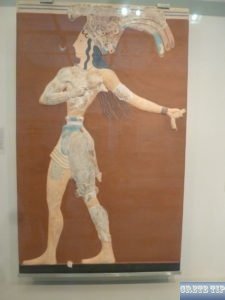
The wall paintings from the younger palace period (ca. 1.600 to 1.400 B.C.) of the palace of Knossos were the great variant of the Minoan painting, but only survived in fragments of time. The most important relief frescoes are ‘The Procession’, which originally contained about 350 life-size figures and was located in the corridor of the south entrance of the palace. The south entrance was also decorated by the ‘Lily Prince’, a relief fresco depicting the royal priest of Knossos.
Also, to be seen are the shields that adorned the balcony of the large staircase, the ‘Ladies in Blue’ dressed in local Minoan costumes, the dolphins from the queen’s chambers, the bull relief, the popular and dangerous Minoan game in honor of the bull, with an athlete in a somersault over the bull’s back.
In the middle of the gallery is the famous frescoed stone sarcophagus of Agia Triada (around 1,400 B.C.), whose four sides are covered with representations of the death ritual.
Gallery XV to XIX
In the first gallery there are smaller but very important frescoes from Knossos, Tylissos and Pseira. The ‘La Parisienne’ is exceptional and shows a young priestess who can be recognized as such by her ribbon and who is beautifully dressed and made up. She is a model of beauty in her time.
In addition, ‘spectators at a cult event’ and ‘grabbing from the throne room’.
In the next gallery the most interesting exhibits are the ‘Saffron Gatherer’, the ‘Captain of the Blacks’ and the ‘Dancers’ from the queen’s megaron, the ‘Blue Bird’ and several others.
In the following two galleries there are pieces from the collection of doctor Giamalakis, which was acquired by the Greek state in 1962. There you can see pieces from the Minoan period to Greek antiquity. In one corner of the hall stands the beautiful, almost life-size bronze figure of a young man from Ierapetra, the only surviving Hellenistic large bronze in Crete.
Gallery XX to XXIII
Smaller works of art from archaic to Roman times (7th century BC to 4th century AD).
Various exhibits from Gortys, Praisos, Arkades, Palaikastro and Prinias. The large figure of Athena in a showcase is remarkable. There are also excellent bronze works from the sanctuary of Zeus in Amnisos, the Psychros Cave, the Idaian Cave, Tylissos and Axos. Various miniature objects, ring stones, jewelry and coins from many parts of Crete can be seen.
Monumental art of the archaic period (700 to 600 B.C.).
Brilliant examples from this period, such as the frieze of riders from the temple of Rizenia (Prinias). The large, porous birds from the Temple of Zeus in Amnisos and sculptures from the Temple of Gortys. The unique hammered bronze statues of Apollo, Artemis and Leto from the Temple of Apollo at Driros and the bronze shields from the Idaian Cave.
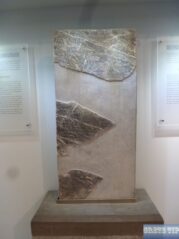
Basement II
Gallery XXVI to XXVII
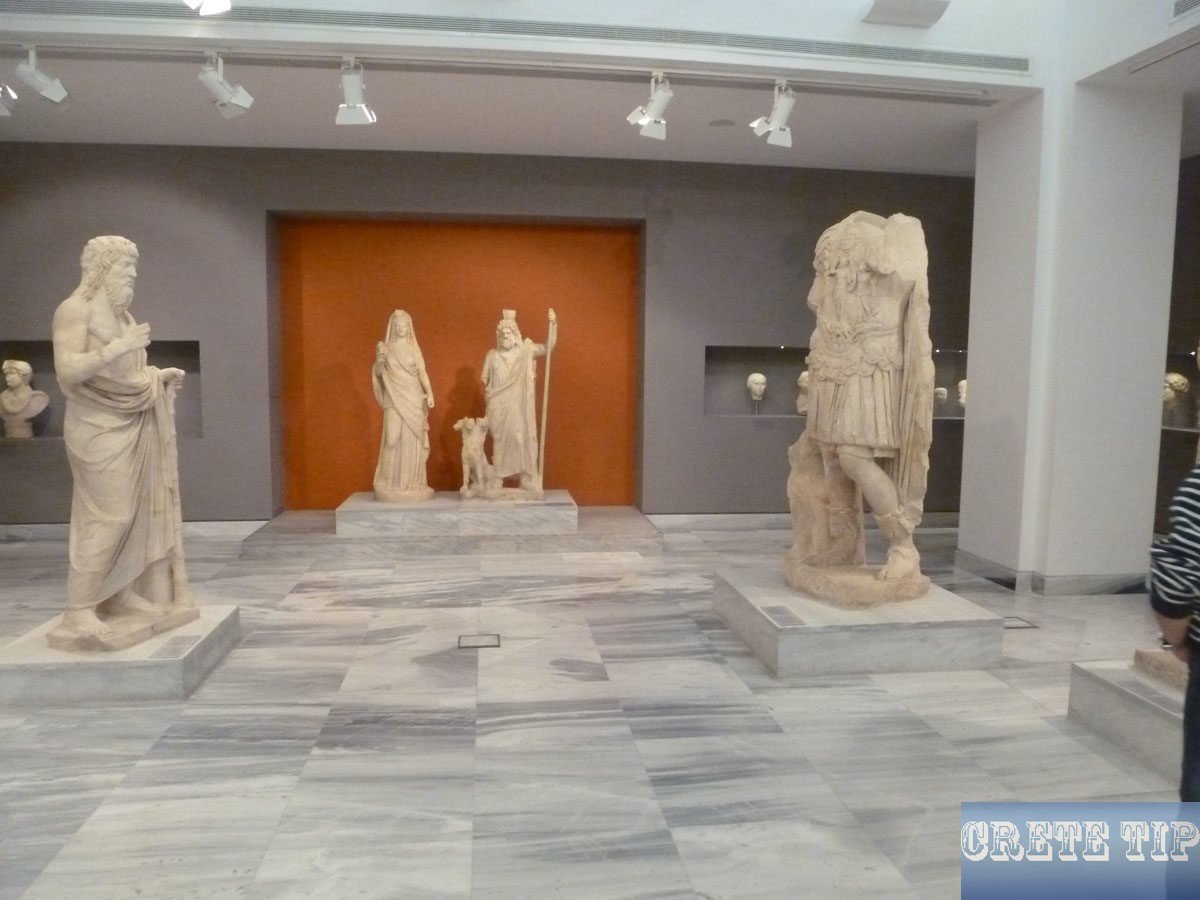
Classical Greek, Hellenistic and Roman sculptures (5th century BC to 4th century AD).
These exhibition galleries in the basement can be reached again via the opposite staircase in Hall XIII. Here are many sculptures from all over Crete. These include statues or their copies, for example ‘Aphrodite’ after Praxitles, Apollo of Gortys and numerous heads.
Since in the early Christian period until the Middle Ages the superstition was kept that the antique statues are ‘spirits’, the heads were cut off.
There are also whole groups of sculptures and the famous marble sarcophagus from Malia with relief scenes to admire.
Directions Archeological Museum Heraklion
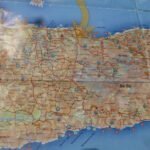 Link to map with directions:
Link to map with directions:
Click here: Directions Archeological Museum.



